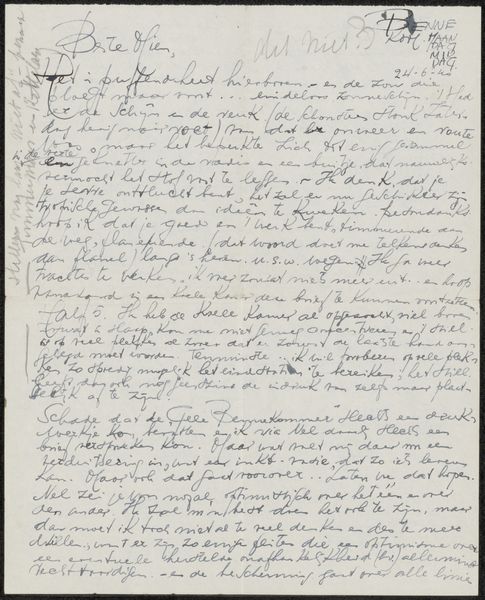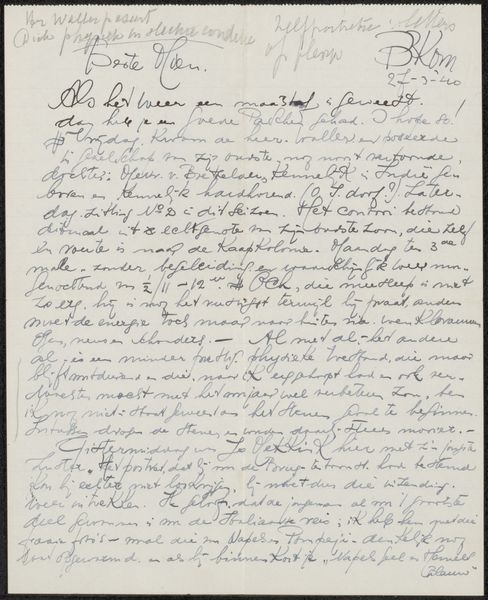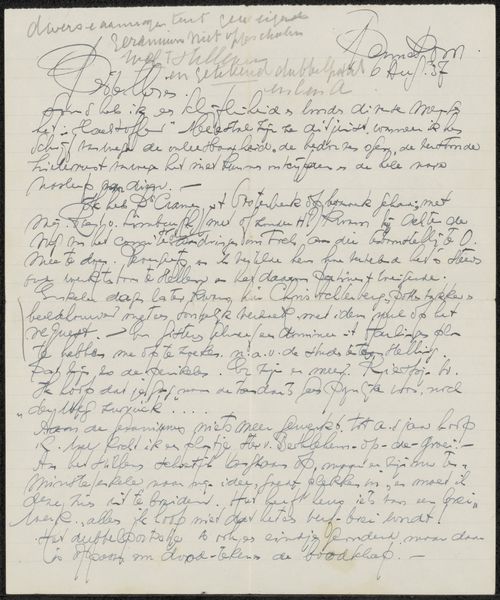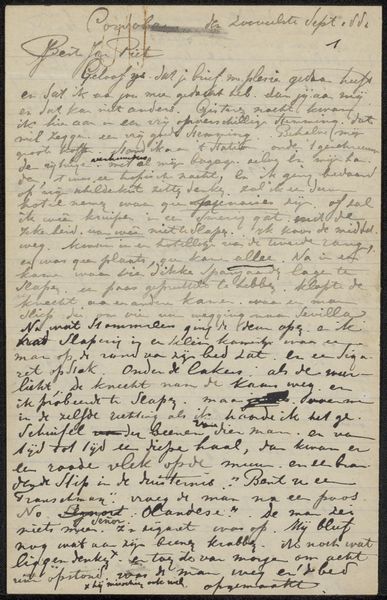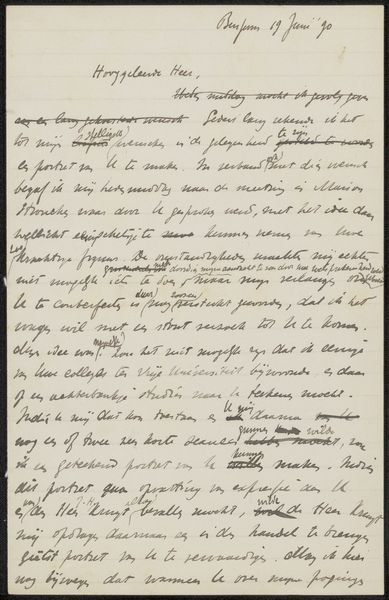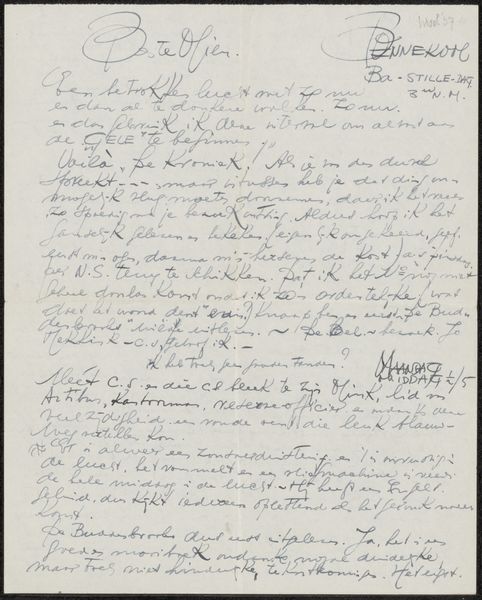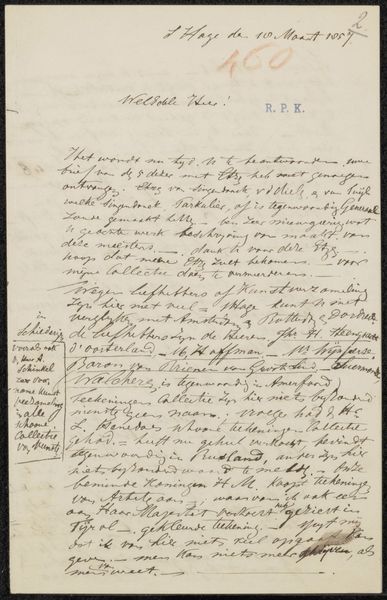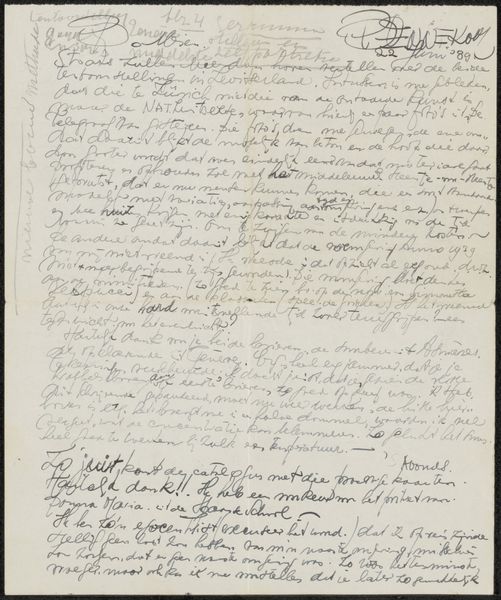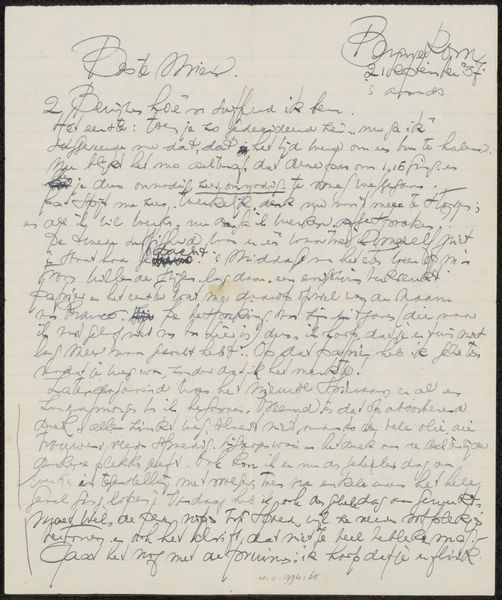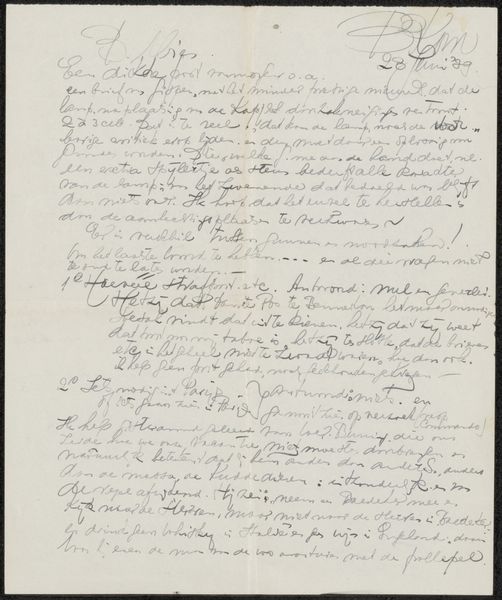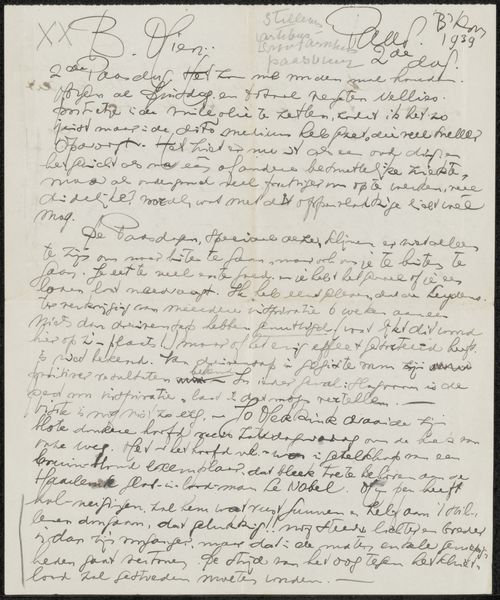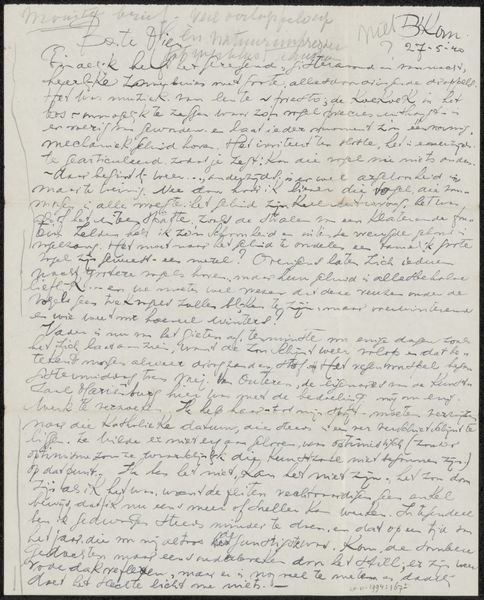
drawing, paper, ink, pen
#
drawing
#
dutch-golden-age
#
paper
#
ink
#
pen
#
modernism
#
calligraphy
Copyright: Rijks Museum: Open Domain
Editor: This is "Brief aan Mien Cambier van Nooten" possibly from 1939, a drawing made with pen and ink on paper by Dick Ket, housed at the Rijksmuseum. It gives the impression of someone writing very quickly; a lot of thought seems to be captured in the spur of the moment. What historical context shapes our understanding of a piece like this? Curator: Considering the social climate, 1939 marks the precipice of World War II. The frantic handwriting, as you noted, gains a different resonance knowing what's about to unfold in the Netherlands and across Europe. Can we even consider this a personal letter or does the text mirror the anxieties bubbling to the surface of Dutch society at the time? Editor: So you’re suggesting the act of writing becomes a way to process the looming conflict? That it is less for an individual receiver, but for society as a whole? Curator: Exactly. Consider the modernist style of writing and fragmented thoughts—it resists the neat, controlled calligraphy of previous eras. This signals a breakdown of old structures mirrored by global political instability. Notice also the numerous cross-outs and corrections. It suggests not just haste but an internal conflict – almost as if Ket struggles to fully articulate what weighs on his mind. Does this impression influence how you, as a modern viewer, connect with this very personal, yet publicly held artwork? Editor: I hadn't considered the connection between the form of the handwriting and the sense of societal unraveling, but it adds another dimension. Seeing the personal and the political intertwine here makes me appreciate the work more. Curator: Indeed, it highlights how individual expression is invariably shaped and inevitably responds to wider cultural currents.
Comments
No comments
Be the first to comment and join the conversation on the ultimate creative platform.

